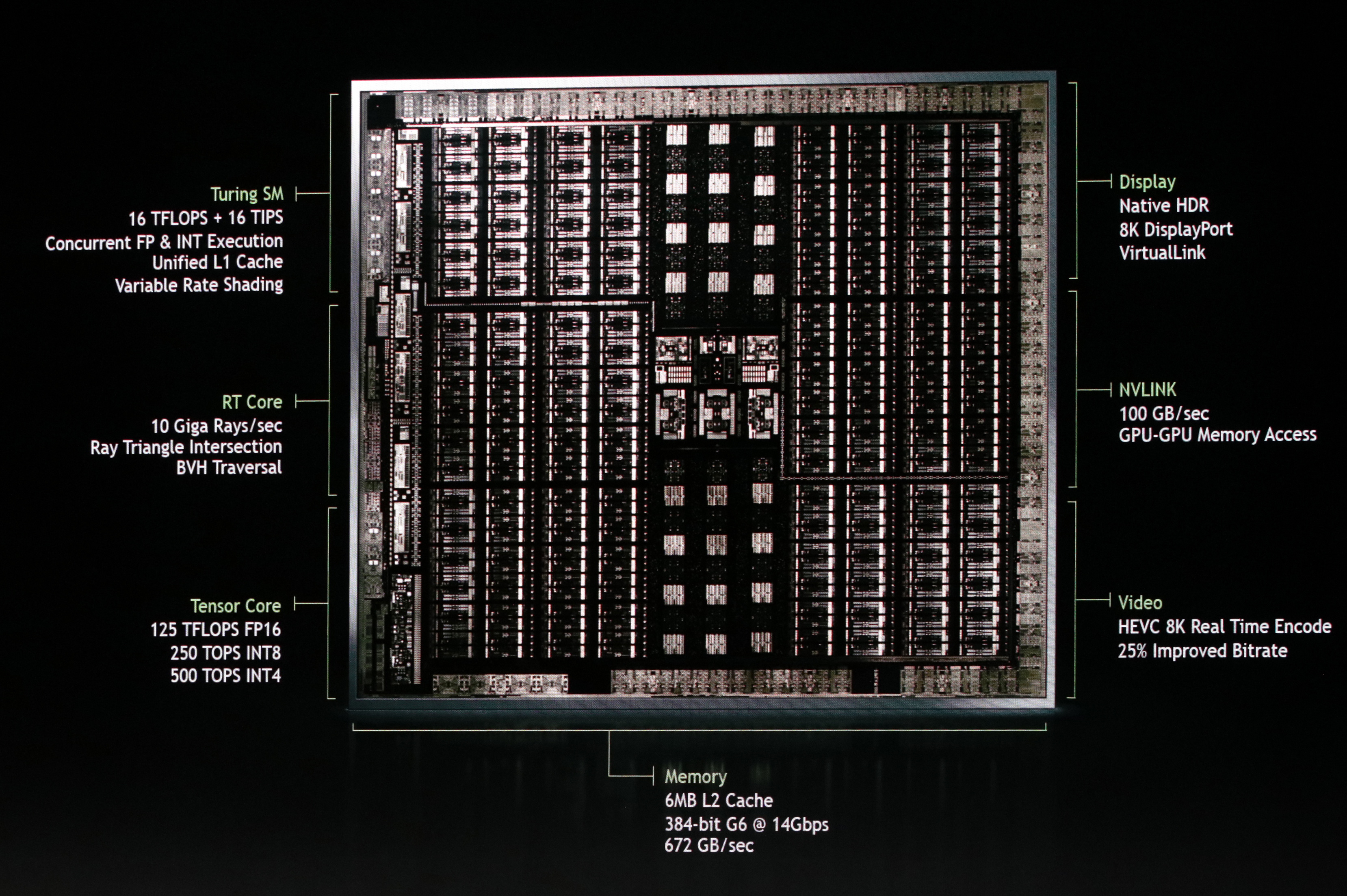Unveiled today by NVIDIA CEO Jensen Huang at the annual SIGGRAPH conference, Turing brings together dedicated hardware acceleration of four core elements: AI, ray tracing, programmable shading and simulation.
...
Designers can now iterate their product model or building and see accurate lighting, shadows and reflections in real time. Previously, they would have to use a low-fidelity approximation to get their design more or less right, then ship files out to a CPU farm to be rendered and get the results back in minutes or even hours, depending on complexity
For artists in the entertainment world, the same is true for visualizing their creations for animation or visual effects. But the benefits don’t stop there. NGX, new NVIDIA technology for bringing AI into the graphics pipeline, is part of the
RTX platform. And NVIDIA is providing an SDK that makes it easy for developers to incorporate AI-powered effects into their apps.
NGX technology brings capabilities such as taking a standard camera feed and creating super slow motion like you’d get from a $100,000+ specialized camera. Or using AI to increase the resolution and clarity of archived images. Or removing wires from a photograph and automatically replacing the missing pixels with the right background. Learn more about these
NVIDIA Research papers that led to this work.
These new capabilities are combined with increases in the speed and fidelity of drawing raster graphics through newly advanced shaders. And up to 4,608 CUDA cores for parallel compute processing means that software developers have a hardware platform unlike anything before.
And, perhaps unsurprisingly, application developers are jumping at the chance to bring to their customers amazing new capabilities and up to 30x speed increases vs. CPU only for rendering.


